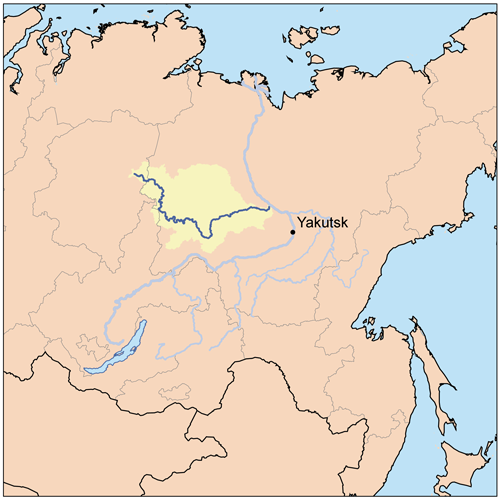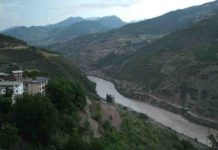
The Vilyuy River is a river of the Central Siberian Plateau, longest tributary of the Lena River. About 2,650 kilometres (1,650 mi) long, it flows mostly within the Sakha Republic. Its basin covers about 491,000 square kilometres (190,000 sq mi).
The Vilyuy rises in the Evenky autonomous okrug and, flowing east, soon enters Sakha. It turns towards the south and southeast, then back towards the east, and finally enters the Lena about 350 kilometres (220 mi) downstream of Yakutsk, near Sangar. To the west of the Vilyui and Chona is the Nizhnyaya Tunguska River basin. The Vilyuy basin is sparsely populated. Small settlements along the river include Vilyuysk, Verkhnevilyuysk, Suntar, and Nyurba.
The river is first mentioned in the 17th century in connection with the Russian conquest of Siberia. In 1634, Russian Cossacks, headed by Voin Shakhov, established a winter settlement at the confluence of the Vilyuy and Tyuken Rivers. This settlement served as the administrative center of the area for several decades, after which it was moved to the Yolyonnyokh area 45 kilometers (28 mi) down by the Vilyuy River, where the ostrog (fortified settlement) of Olensk (now Vilyuysk) was founded in 1773.
In the 1950s, diamond deposits were discovered in the area, about 700 kilometres (430 mi) from its mouth. This led to the construction of the Mir Mine, together with access roads and an airport, and the Vilyuy Dam complex to generate power needed for the diamond concentrators.
Note : The above story is based on materials provided by Wikipedia.










